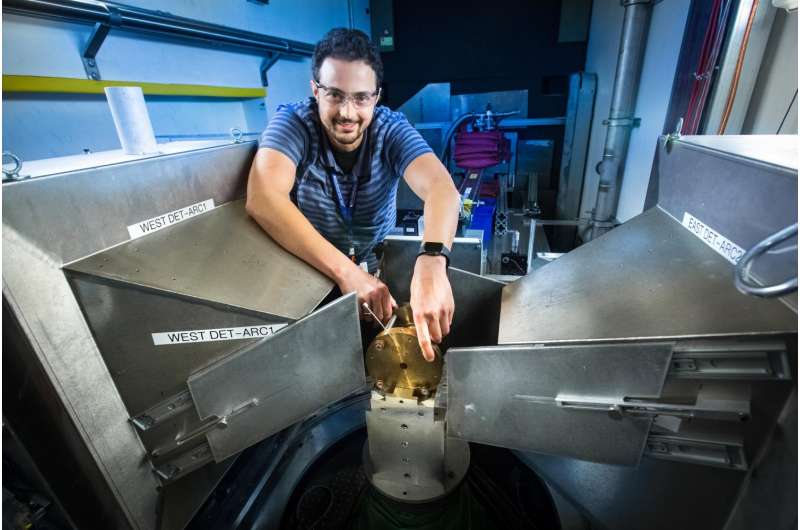Neutron diffraction probes forms of carbon dioxide in extreme environments

Carbon dioxide is a key component in the carbon cycle of Earth, both in the atmosphere and in the mantle, or hot layer under Earth's crust. Studies of high pressure, high temperature phases of solid carbon dioxide are important to understand the forms that carbon may adopt at the extreme pressures and temperatures of Earth's interior.
Through a Deep Carbon Observatory collaboration, Adam Makhluf of the University of California, Los Angeles's Earth, Space and Planetary Science Department and Chris Tulk of Oak Ridge National Laboratory's Chemical and Engineering Materials Division are using neutrons to study the fundamental role carbon dioxide plays in Earth's carbon cycle, especially in the composition of carbon reservoirs in the deep earth and the evolution of the carbon cycle over time.
Makhluf and Tulk are using the SNAP instrument, SNS beam line 3, located at ORNL's Spallation Neutron Source, to provide insight into carbon dioxide's behavior under intense conditions.
"At high pressures and temperatures, it is thought that carbon dioxide can take on unusual bonding arrangements that make it very similar chemically to silicon dioxide," Makhluf said. "There may be much more carbon than we think inside of the Earth because of substitution reactions with the most ubiquitous oxide on earth, silicon dioxide."
Studying such specific aspects requires very small samples that can be put under extreme high pressure, a process possible with an apparatus called a diamond anvil cell. This cell pressurizes the sample between two diamonds and allows researchers to place the sample in the neutron beam to produce crystallographic data. Although this high pressure is necessary to analyze the carbon dioxide, high temperatures are also essential to fully interpret the results.
"No one has ever laser heated such a large sample under high pressure," Makhluf said. "This study is meant to advance neutron science in diamond anvil cells so that other users can investigate samples at extreme temperatures."
ORNL neutron diffraction experts Reinhard Boehler and Tulk, a SNAP instrument scientist, are important contributors to this technique.
Carbon dioxide is versatile, adapting and producing new forms depending on the pressure and temperature levels. In fact, the carbon dioxide phase known as CO2-V typically emerges under harsh conditions, providing a way to effectively study Earth's mantle.
Despite carbon's notable influence on crucial planetary functions, scientists do not yet understand the details of the high pressure and temperature phases. Some phases are stable as long as they are not subjected to significant disruptions. For example, phase V of carbon dioxide remains metastable even in environments that do not meet the synthesis conditions.
Increasing knowledge about these forms will solidify understanding of carbon interactions in the Earth, providing a foundation on which to base future observations and discoveries.
Provided by Oak Ridge National Laboratory





















